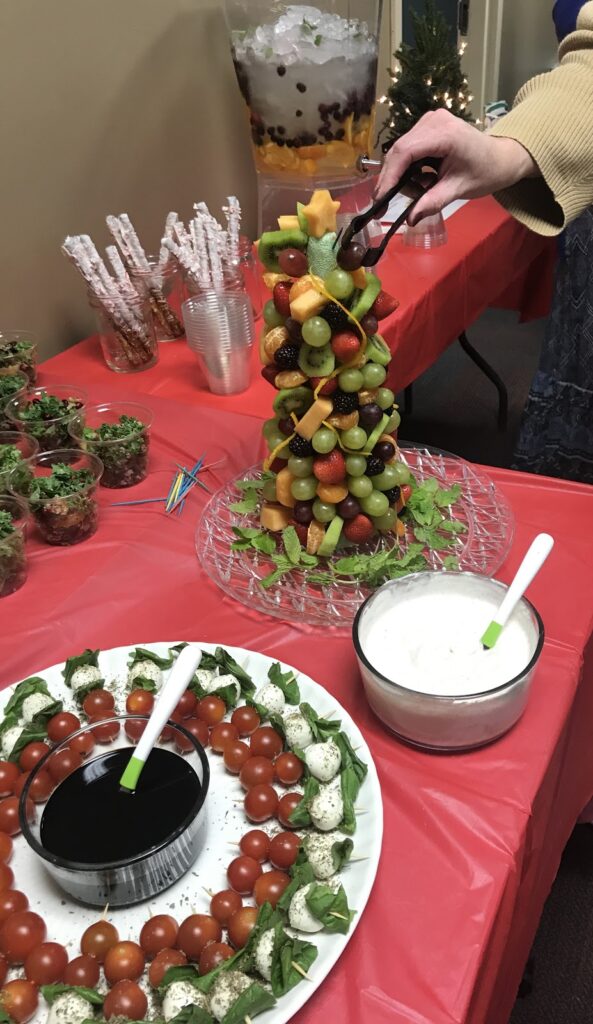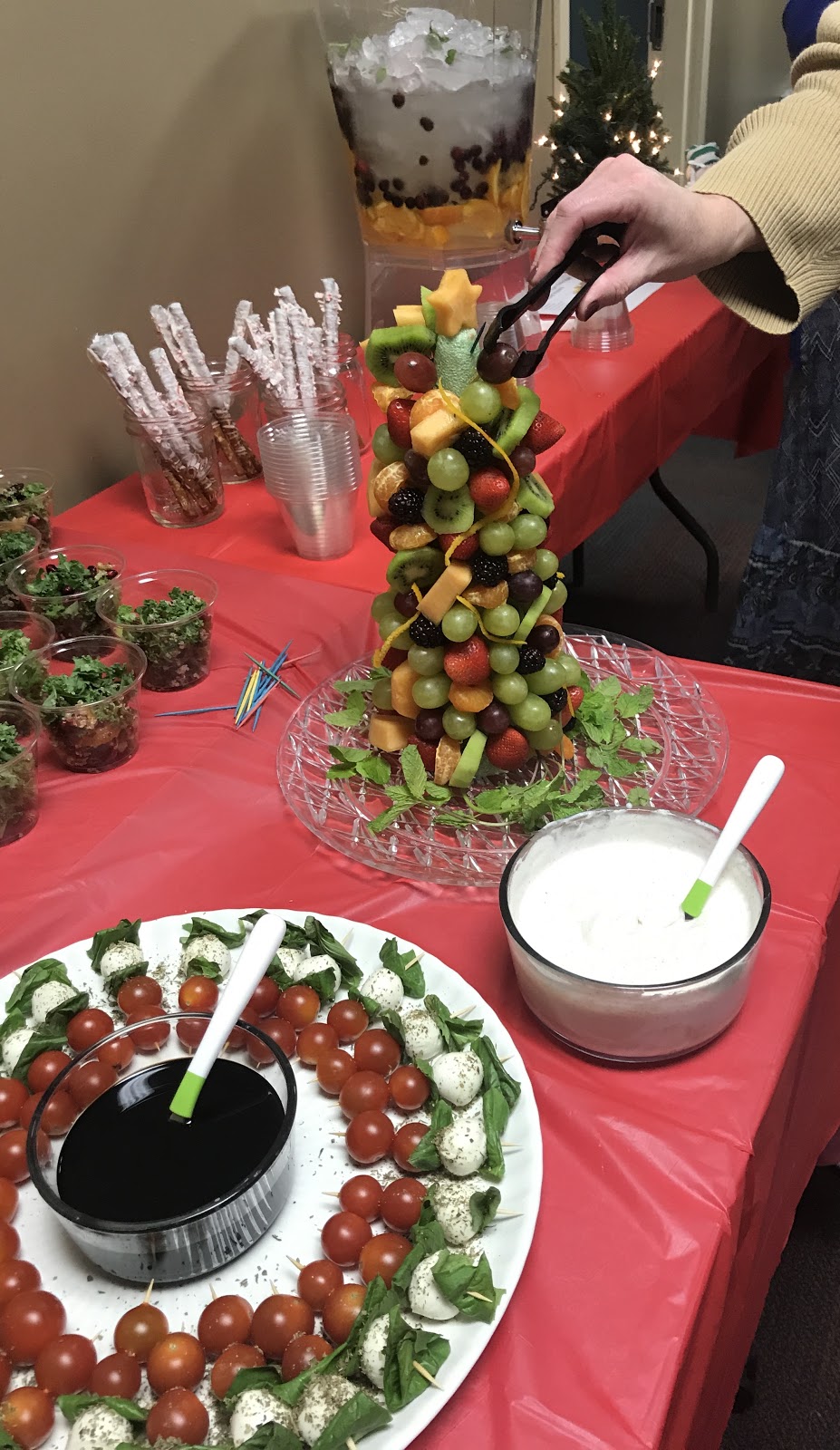
With the holiday season and celebrations in full swing, today we want to share 9 tried and true strategies to enjoy the spread at holiday gatherings without compromising blood glucose. These strategies have worked for our clients and he hope are helpful for you.
Strategy #1: Consider eating a small snack before the holiday gathering to curb appetite
Some find it helpful to eat a small snack before heading out to the festivities. Maybe a small handful of almonds, peanuts, or pistachios, a boiled egg, or a stick of string cheese. It’s easier then to focus on fun and visiting, rather than being sidetracked by appetite, concerns about there being food options that work for you, and potential worry about blood glucose dropping out of range.
Strategy #2: Take a healthy dish or treat to share, or a healthier version of a favorite. Maybe it’s something like the caprese kabobs Tami made for an event that you see pictured above. Just a couple of grape tomatoes, fresh basil (or spinach) leaves, and a fresh mozzarella ball speared with a small skewer with a balsamic dressing to drizzle. Offering to bring something healthy can reduce stress by knowing that there’s at least one item to suit personal preferences and needs. (And chances are the host will welcome an addition to the party spread!)
Strategy #3: Plan ahead how to fit-in carbohydrate-rich foods. We’ve seen many try to trick themselves into believing that “just a little bit” of a carbohydrate-rich food won’t affect blood glucose? Sweet potato casserole, stuffing, corn pudding…you get the idea. The reality is, that strategy often doesn’t work out so well. However, by familiarizing oneself with the carbs in special holiday foods, planning a carbohydrate managed portion, and then including those carbs rather than simply adding them on, it’s possible to enjoy holiday foods and still manage blood glucose.
Strategy #4: Stick with tiny tastings. Many clients we’ve worked with over the years have shared success keeping their blood glucose in range by sticking with tiny tastings, or 2-3 bites, of foods they may be unsure of exactly what’s in them or foods that are rich in carbohydrates They can still enjoy the experience without too much worry of sending blood glucose out of range. This is also a great strategy when traveling. You can read more about that here.
Strategy #5: Cruise by the foods that aren’t worth the carbohydrate or calories. We encourage clients that before filling the plate with a little bit of everything, to cruise the buffet or party spread to see what’s available, and then decide which foods they really want, and what portion of each works for them. We encourage asking themselves, “Is it worth the carbohydrate or calories?” If the answer is “no,” then it may be best to pass it by. If the answer is “yes,” then decide what portion fits their carbohydrate budget before adding it to the plate.
Strategy #6: Fill half of the plate with veggies of the non-starchy variety
Aim to fill at least half of the plate with non-starchy veggies like carrots, broccoli, cherry or grape tomatoes, and pepper strips. Or fill a punch cup with salad (like you see in the picture). Raw vegetables will keep you munching and fill you up with minimal carbohydrates and calories, leaving room in the carbohydrate “budget” to sample some special foods.
Strategy #7: Go for protein if possible
When you’re cruising the spread, take note of protein options. Maybe there’s cheese, nuts, chicken salad, or sliced turkey or beef that can curb hunger with little carbohydrate or effect on blood glucose.
Strategy #8: Plan for alcohol if you choose to drink
Decide your limit on alcohol before any special occasion. Consider starting with a nonalcoholic beverage (especially if thirsty) and then slowly savor an “adult beverage” of choice. If choosing to sip more than one alcoholic drink, drinking something in between that’s nonalcoholic (like sparkling water, club soda, or infused water which you see in the picture) will give the body time to process the alcohol already consumed. The big thing to know is that for people with diabetes alcohol may cause blood glucose to drop too low, especially for those that take diabetes medications with hypoglycemia as a side effect.
Strategy #9: Evaluate what went well. After each event, reflect on what went well and how you can repeat that at future gatherings. This is a helpful solution-focused strategy for anyone! Also think about what didn’t go as planned, and what changes can be made at future gatherings to keep blood glucose in range. You can read more in our blog post on Bright Spots and Landmines.
If you are a health care professional and interested in learning more about our solution-focused practice and approach, when you subscribe to our blog, we’ll send you in return a FREE resource of 10 Solution-Focused Questions to start a solution-focused discussion with your clients.
Follow us on Twitter and Instagram @AFreshPOVforYou





